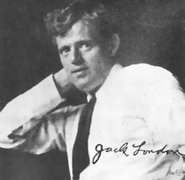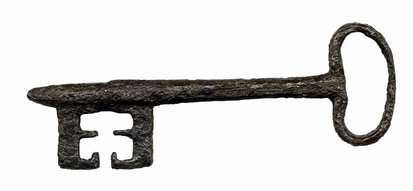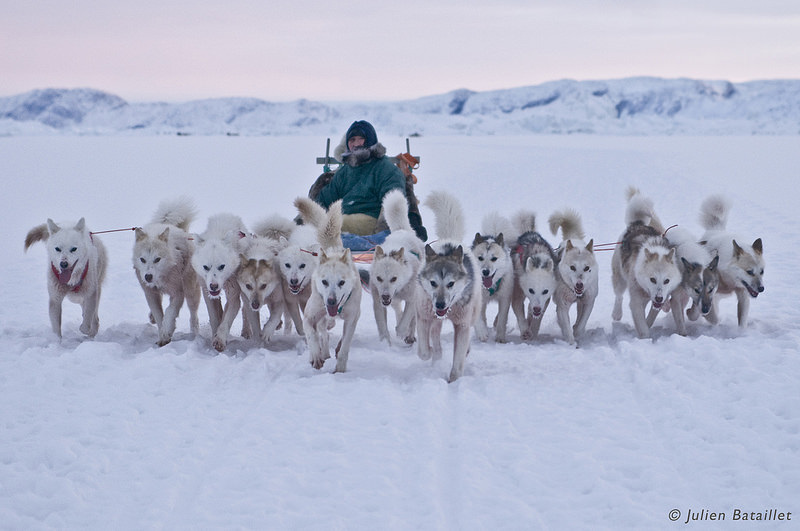|
with Angela Harris Intro to The Call of the Wild We began the second formal session of Interpreting Literature with a brief overview of the life of a fascinating character--Jack London. Jack London was born in San Francisco on January 12, 1876. London grew up in Oakland, and his family was mired in poverty throughout his youth. He remained in school only through the eighth grade but was a voracious reader and a frequent visitor to the Oakland Public Library, where he went about educating himself and laying the groundwork for his impending literary career. In his adolescent years, London led a rough life, spending time as a pirate in San Francisco Bay, traveling the Far East, and making his way across America as a tramp. Finally, temporarily tired of adventure, London returned to Oakland and graduated from high school in one year. He was even admitted to the University of California at Berkeley, but he stayed only for a semester due to his frustration with the slow pace of his classes. He began a lifelong practice of self-education, often reading and studying for more than 15 hours per day! Key Facts & Literary Analysis After introducing the plot to The Call of the Wild, we then went over a "Key Facts" handout. At this stage of literary analysis, students should begin to become familiar with and later, comfortable with, defining and identifying key literary terms such as setting, tone, themes, motifs, and symbols. As we read through the book, we will be identifying and discussing these different elements in class. In Sessions III and IV, we will actually be writing about them as they relate to our novels in classic five-paragraph essays. This week's focus was understanding "Culture & History" in literature. Why is it a good idea to know something about the culture and historical background of a novel when analyzing a work of literature? Context, of course! Cultural and historical contexts give birth to the dilemmas and themes at the center of the novel. Studying these contexts and appreciating intricate details of the time and place help readers understand the motivations of the characters. The Klondike Gold Rush & The Inuit People Each class will also continue to have a mini-lesson that relates to an aspect of the book. This week we learned about the Klondike Gold Rush (perhaps not as well known to us as the California Gold Rush!) and the individuals (prospectors and native peoples) that the gold rush affected. For instance, the Canadian government enforced a law that required every team of prospectors to carry 1000 pounds of supplies with them to make it over the mountains. Most of this weight came from food (including the recommended 20 pounds of flour, 12 pounds of bacon, 12 pounds of beans, 3 pounds of coffee, and 5 pounds of corn meal). Heavy equipment and the warmest clothing available made up the rest. Once a team reached Dawson (YT), they found much of the land already staked. Many obtained jobs working for other miners in hotels, bars, or supply shops. Mail, carried entirely by dogsled, was often delayed for months at a time in the winter. Cities like Dawson were also rife with con-men. From its impassable trails to its sawdust bar rooms, the Klondike was a dangerous place. Once known as Eskimos, the Inuit inhabit the Arctic region, one of the most forbidding territories on earth. Occupying lands that stretch 12,000 miles from parts of Siberia, along the Alaskan coast, across Canada, and on to Greenland, the Inuit are one of the most widely dispersed people in the world, but number only about 60,000 in population. Between 25,000 and 35,000 reside in Alaska, with other smaller groups in Canada, Greenland, and Siberia. The name Eskimo was given to these people by neighboring Abnaki Indians and means "eaters of raw flesh." The name they call themselves is Inuit, or "the people." In fact, many of the Inuit people feel the term "Eskimo" is unflattering, and do not like to be referred to by that name. The Canadian Indian and Inuit were the foremost peoples to use huskies in an interdependent relationship. The Yukon gold discovery of 1898 added great popularity to sled dogs after thousands of Canadians, Americans and Europeans briefly streamed into far northwestern Canada. These men quickly came to realize the necessity of having a strong dog team. Many chose to bring some of their four-legged companions back home upon their return to their respective countries. Homework for Next WeekPlease continue to follow your syllabus closely for all required homework as it won't be reiterated here, however, I will post any additions or changes on Mosaic Minutes, so be sure to read the post each week.
Don't forget to fill out your Map Log after you read each week (Map Logs are new this session) and the Google Map Link you need to complete your Map Log is here: https://www.google.com/maps/d/viewer msa=0&mid=z_ApyoPR9lPM.k4t8qiEuZoSs For this week's exploratory essay (researching the positive and negative effects of the Klondike Gold Rush on its people, economy, and environment), you may find the following summation extremely helpful: Impact of the Klondike Gold Rush. Remember to look for other information as well, and cite your sources as before. Comments are closed.
|
Categories
All
Archives
May 2016
|

 RSS Feed
RSS Feed